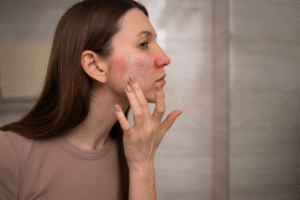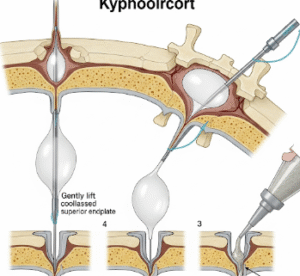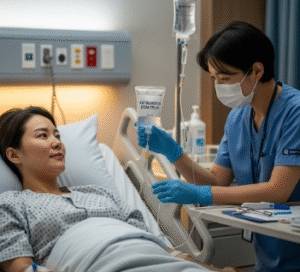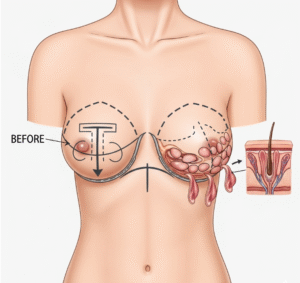What It Is
A daddy do-over is a personalized combination of cosmetic procedures for men designed to restore a more youthful, athletic appearance after the physical effects of aging, stress, and lifestyle changes. Much like the mommy makeover for women, the daddy do-over addresses stubborn fat, sagging skin, and changes in the chest, abdomen, and face.
In Korea, the procedure often includes liposuction, male breast reduction, tummy tightening, and facial rejuvenation using both surgical and non-surgical methods. Korean surgeons focus on natural, masculine results that enhance confidence without looking overdone.
Why It’s Done
Men choose a daddy do-over because:
- They develop stubborn fat deposits in the abdomen, flanks, or chest.
- They struggle with gynecomastia (male breast enlargement).
- They want to restore a more defined, athletic chest and waistline.
- They notice signs of aging in the face and neck and want a refreshed look.
Good candidates include:
- Men in good health with stable weight.
- Those experiencing cosmetic concerns after fatherhood, aging, or lifestyle changes.
- Patients seeking a comprehensive transformation in one surgical plan.
Alternatives
- Diet and exercise: Essential but may not eliminate sagging skin or gynecomastia.
- Non-surgical contouring (cryolipolysis, ultrasound, radiofrequency): Improves mild fat deposits but limited for major changes.
- Staged surgeries: Some men opt for individual procedures at separate times.
Preparation
Before a daddy do-over in Korea, patients will:
- Undergo consultation and physical evaluation.
- Stop smoking and alcohol 2–4 weeks before surgery.
- Avoid blood-thinning medications and supplements.
- Plan for time off work and recovery, usually 2–3 weeks.
How It’s Done
- Anesthesia: General anesthesia is typically used.
- Common procedures included:
- Liposuction of the abdomen, flanks, chest, or chin.
- Male breast reduction (gynecomastia surgery) if needed.
- Tummy tuck (abdominoplasty) for loose abdominal skin or muscle tightening.
- Facial procedures such as eyelid surgery, facelift, or neck lift.
- Non-surgical add-ons like Botox, fillers, or laser treatments.
- Customization: The surgical plan is tailored to each patient’s goals.
- Duration: 4–7 hours depending on combination.
Recovery
- First week: Swelling, bruising, and soreness are common; compression garments used for chest and abdomen.
- Hospital stay: 1–2 days if multiple major procedures are combined.
- Return to activities: Light work in 1–2 weeks; heavy lifting and exercise avoided for 4–6 weeks.
- Final results: A firmer, more youthful body and refreshed appearance visible within 2–3 months.
Possible Complications
- Infection or delayed wound healing.
- Seroma (fluid buildup) or hematoma.
- Visible scarring, though minimized with Korean surgical techniques.
- Asymmetry or uneven contour.
- Rare risks: blood clots or anesthesia complications.
Treatment Options in Korea
Diagnosis
Korean surgeons use physical assessment, 3D body imaging, and photography to create a tailored daddy do-over plan.
Medical Treatments
- Weight management, hormone checks, and non-surgical fat reduction for milder concerns.
Surgical or Advanced Therapies
- Liposuction for stubborn fat removal.
- Gynecomastia surgery for chest reshaping.
- Tummy tuck or mini-abdominoplasty for abdominal tightening.
- Facelift, eyelid lift, or neck lift for facial rejuvenation.
- Combination surgery for overall transformation.
Rehabilitation and Support
- Compression garments for chest and abdomen.
- Scar management with silicone sheets, gels, or laser therapy.
- Lifestyle and fitness counseling to maintain results.
- International patients benefit from Korea’s expertise in male cosmetic surgery, discreet services, and advanced body-contouring techniques.













